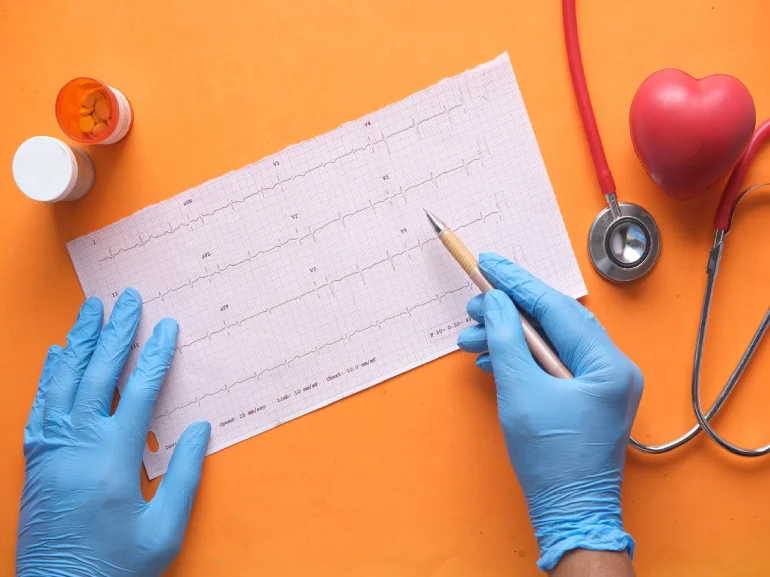Disclaimer: This website provides health information for educational purposes only and is not a substitute for professional medical advice, diagnosis, or treatment. Always seek the guidance of a qualified healthcare provider with any questions you may have.
Many people in the United States suffer from cardiac diseases. Some people can find relief from their cardiac conditions through treatments and others need racial surgery. One way people with a condition known as bradycardia can find relief from their diseases is by using pacemakers.
According to the American Heart Association, there are over 3 million people across the country who have pacemakers implanted in them. A further 600,000 people get new pacemakers implanted every year. Because of its prevalence among millions of Americans and the important health benefits it represents, accurate information about pacemakers is crucial.
Learn what pacemakers are, what they are for and other vital information.
What are Pacemakers?
Pacemakers are implanted medical devices that help maintain your heartbeat to a healthy level. The device itself is made of two main components: a pulse generator and electrode. The pulse generator is a metal or sometimes plastic casing that contains the device’s battery and important circuitry.
A few flexible wires, the electrodes, are attached to the pulse generator and are hooked up to various chambers of the heart. However, some of the more modern devices no longer require electrodes to function at all.
The pacemaker ensures you maintain a regular heartbeat by sending out minute electrical impulses to your heart. A few newer devices actively monitor your other bodily functions to determine how much energy to send out to your heart. Others can even directly send information such as heart rate, pulse rate and oxygenation to a device like a smartphone.
Who Needs Pacemakers?

Pacemakers are used to monitor and treat a condition known as bradycardia. Normal heart beats at a rate of 60 beats in a single minute. However, people afflicted with bradycardia have heartbeats that fall below this minimum. This means that they tend to suffer from poor constitution as their body doesn’t receive the normal amount of oxygen and nutrients.
The main symptoms of bradycardia include fainting spells, sudden dizziness, mental difficulties, perpetual fatigue and sometimes weakness. Although these symptoms may not seem dangerous, they can be fatal if they strike at the wrong time. Fainting in bed isn’t that bad, but fainting while driving a car can be deadly. Severe bradycardia can also lead to cardiac arrest, elevated blood pressure and severe chest pains.
What are the Risks of a Pacemaker?
Implanting and living with a pacemaker can carry some risks, although they are manageable.
Some of the risks involving the procedure and the device include the following:
- Your lungs could collapse during the operation.
- The site near the pacemaker could experience some swelling and bruising because of the implantation.
- Strong electrical fields can interfere with the pacemaker and cause painfully fast heart rates.
- Blood clots can form near the pacemaker area, causing discomfort and perhaps infarctions if left undetected.
- Infection of both the surgical area and the pacemaker site could result in sepsis, fever and other associated complications.
- Blood can infiltrate the area between your chest wall and the lungs, making breathing difficult.
What Can You Expect After Implantation?

Living with a pacemaker requires some special precautions. Directly after implantation, you will be required to avoid physical strenuous activities like heavy lifting. After you’ve fully recovered from the surgery, you will have to take a few medications to continue maintaining your treatment.
You don’t have to avoid devices like smartphones and computers when you have a pacemaker because it doesn’t have the technology to even interface with these devices meaningfully.
On the other hand, you should carry a card that identifies you as having an implanted pacemaker. This will make it easier for you when you pass through metal detectors and the device inevitably sets them off.
Finally, you should stay away from all high-voltage and power generating machinery. Electrical and magnetic impulses can interfere with your pacemaker and may even cause it to go haywire. Take every precaution to avoid these equipment and read up on the particular safety precautions for your pacemaker.
What are Common Misconceptions About Pacemakers?
Like most medical procedures and devices, there are a few misconceptions about pacemakers that could pose problems with proper maintenance and care.
-
Microwaves are bad for pacemakers
Only the oldest and outdated types of pacemakers are affected by microwaves. Newer models are insulated and you can safely use it around any appliance.
-
Cellphones can interfere with pacemakers
As previously established, your cellphone and cellphone signals cannot interact with your pacemaker’s operation.
-
Pacemakers stop heart attacks
This is untrue. Pacemakers cannot destroy blockages in your veins that cause heart attacks. Some heart attacks stem from elevated heart rates, which pacemakers cannot prevent either.
Pacemakers help save millions of lives across the United States. Learning everything you can about them, especially if you may need one or if you live with someone who has one, will be crucial in taking care of them.

